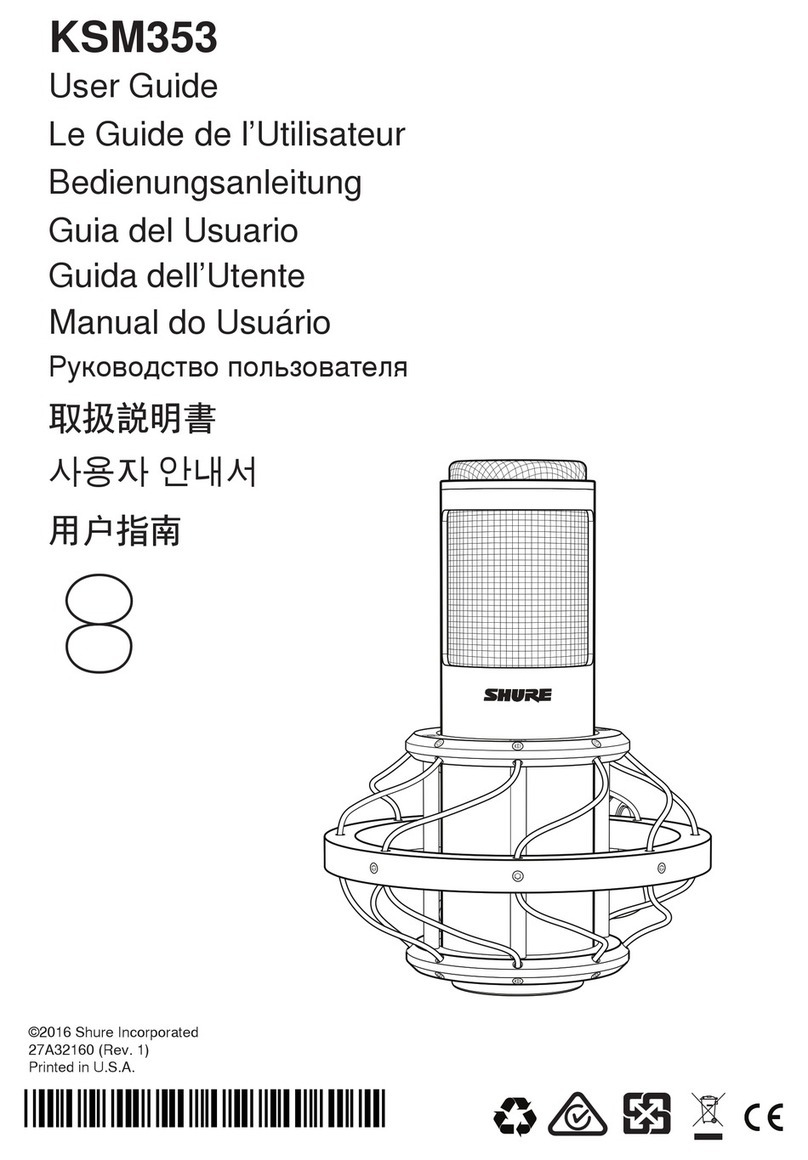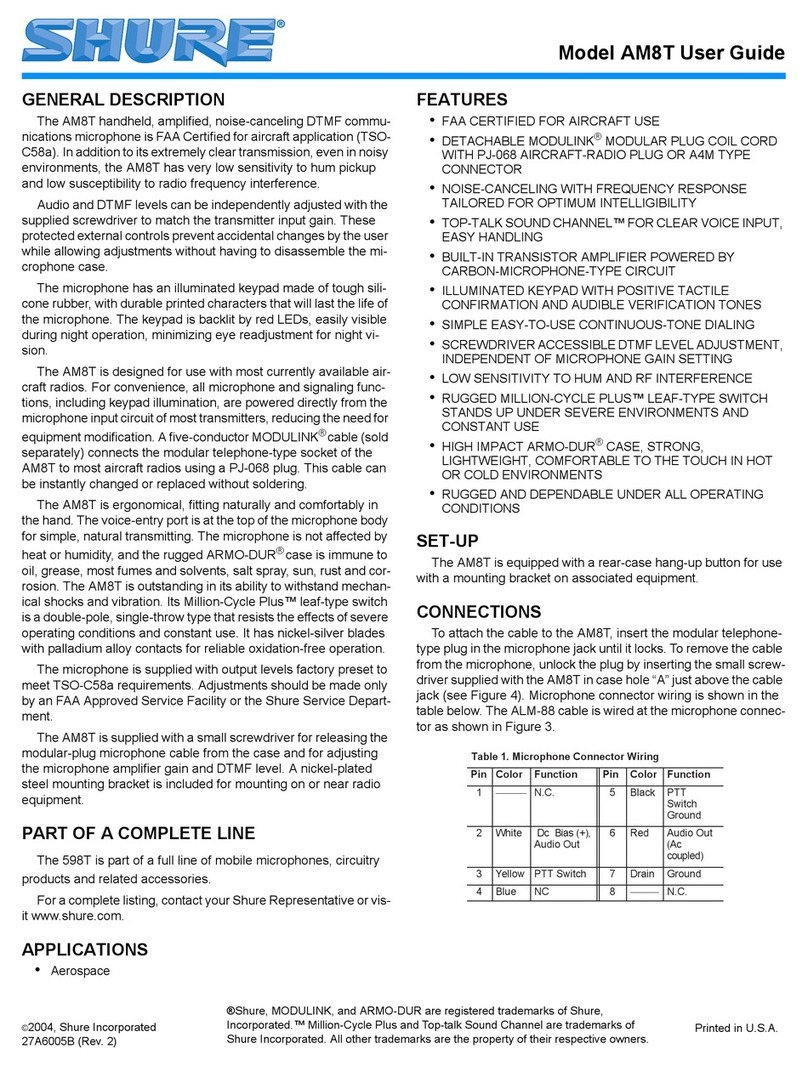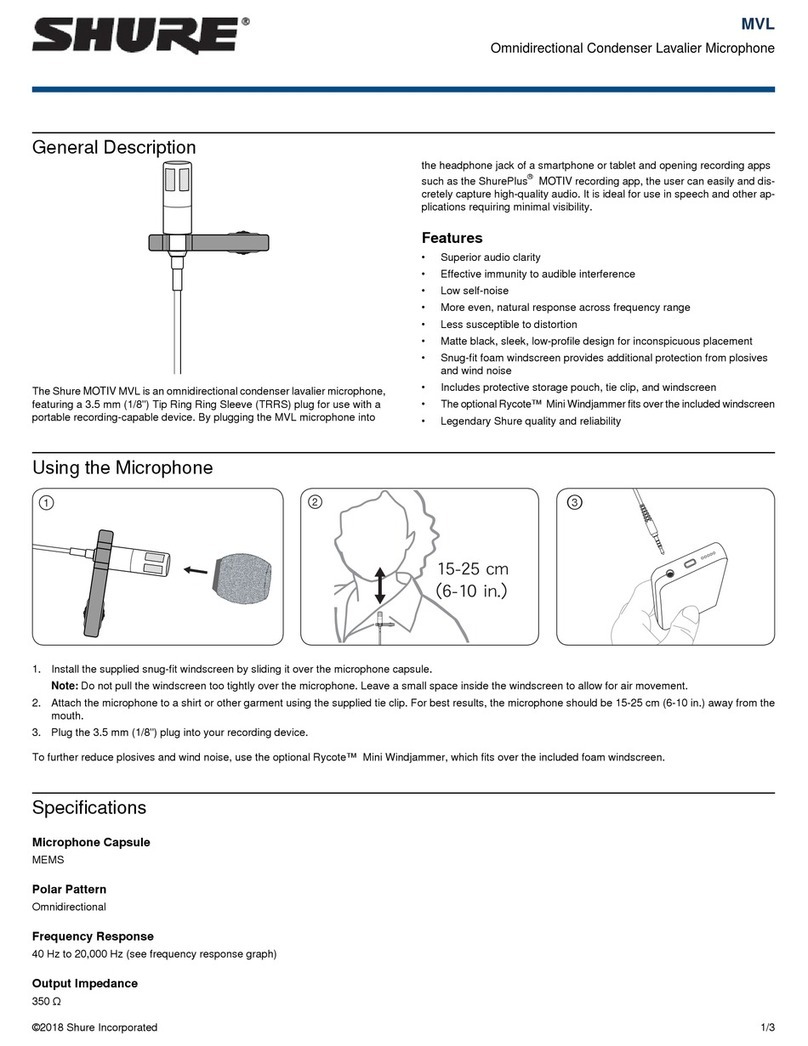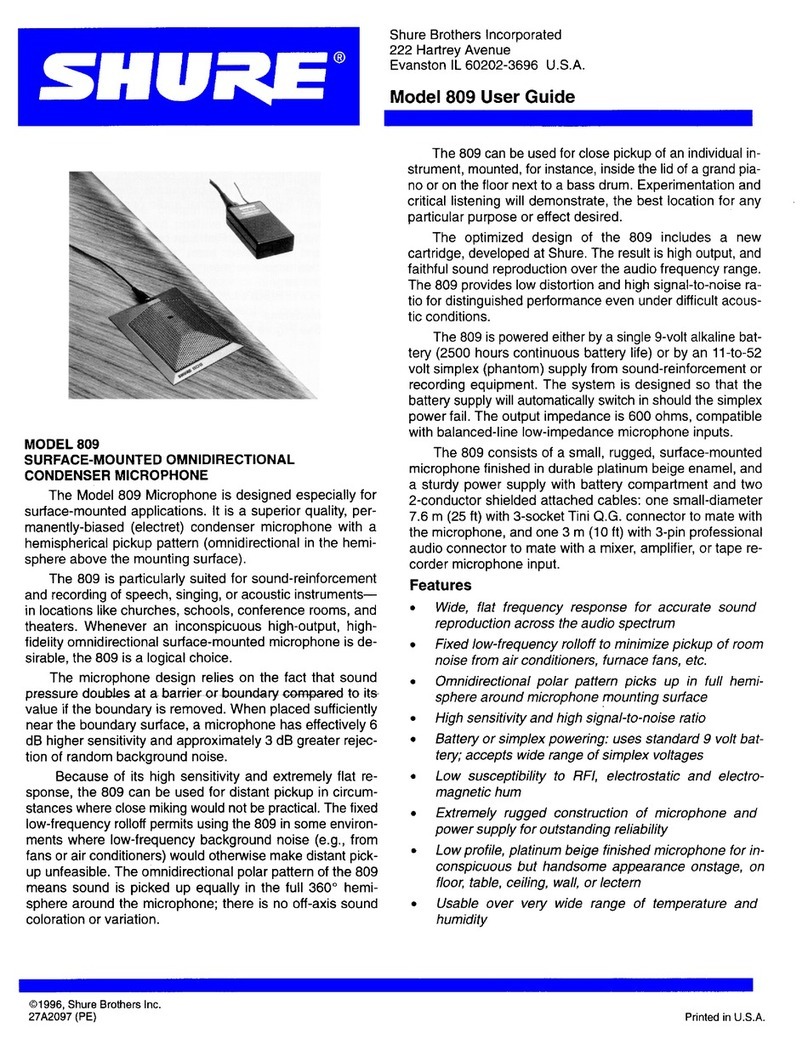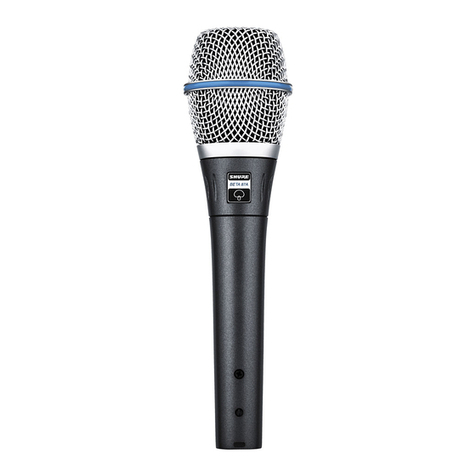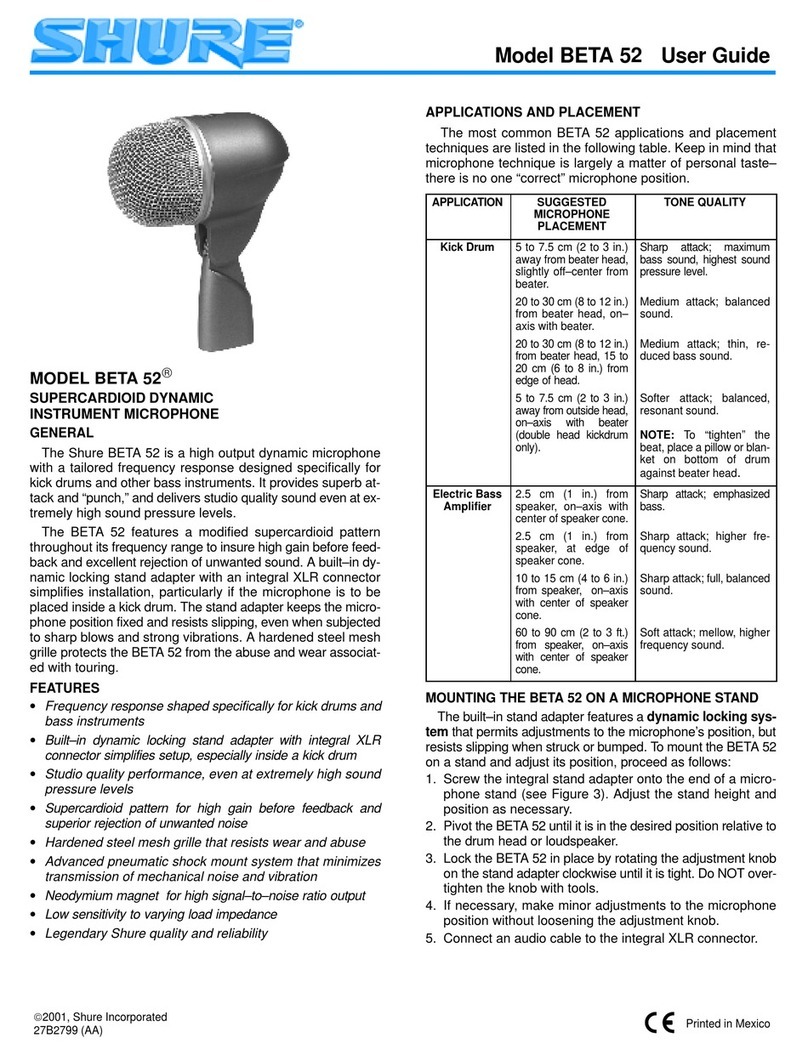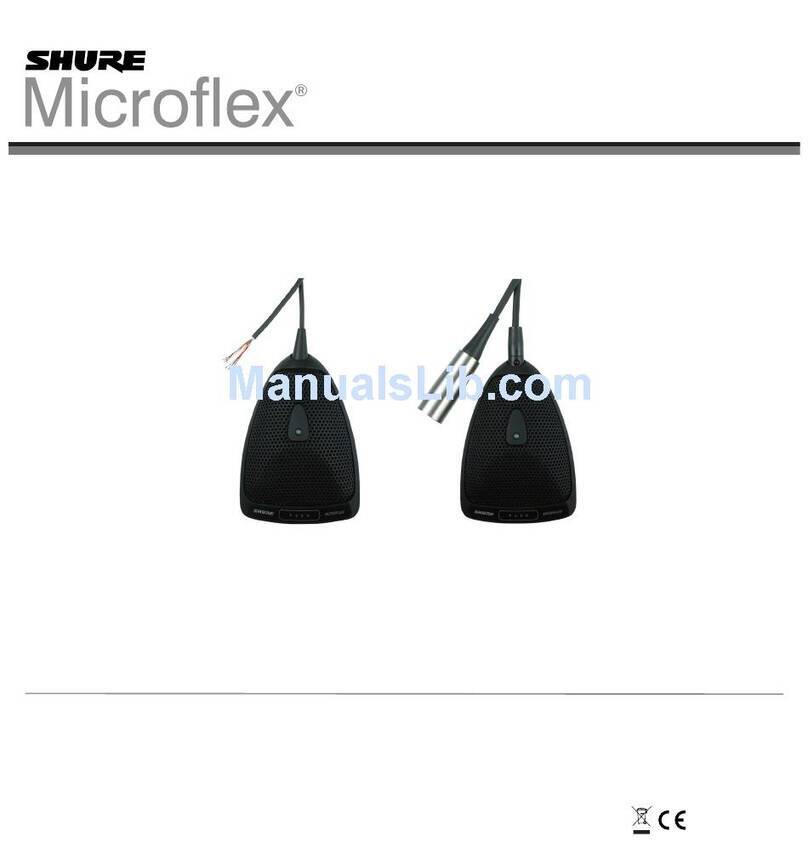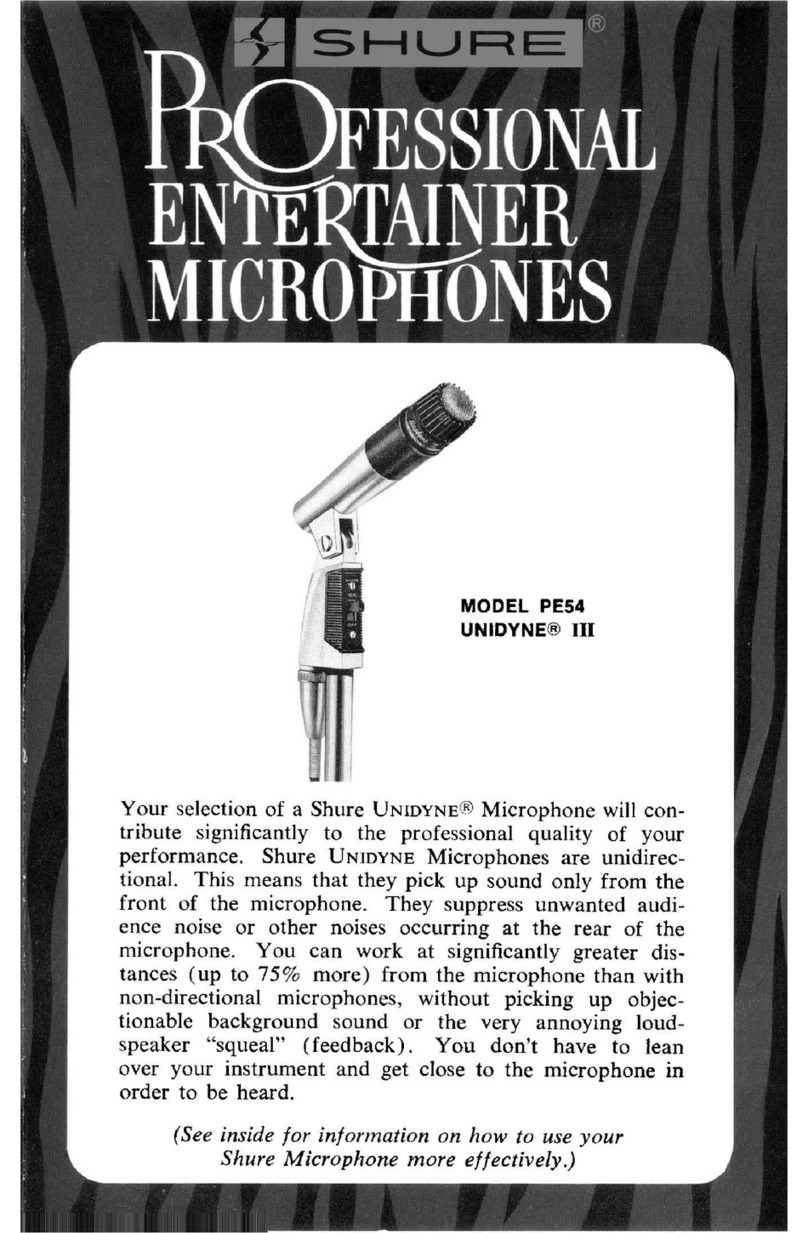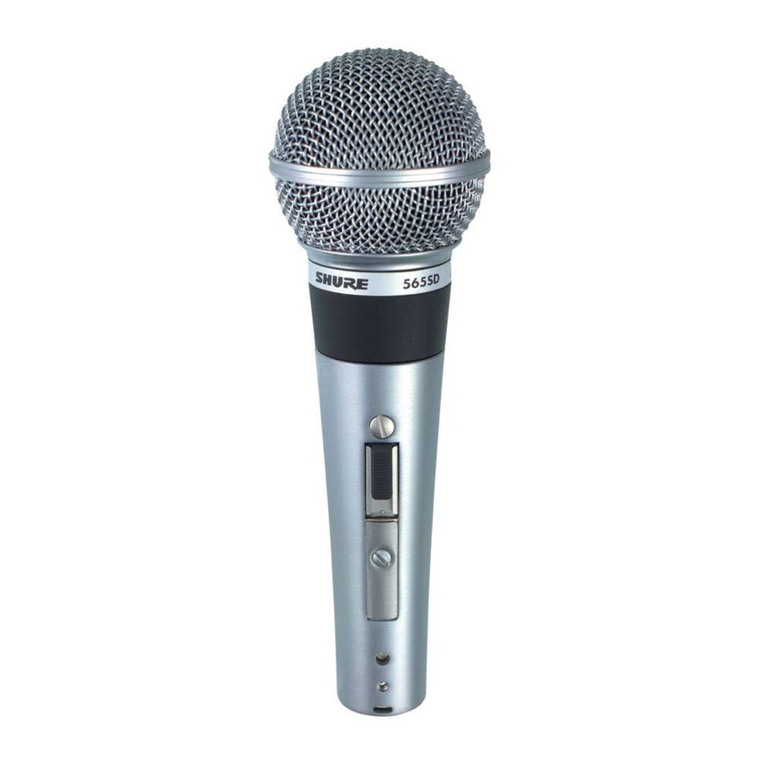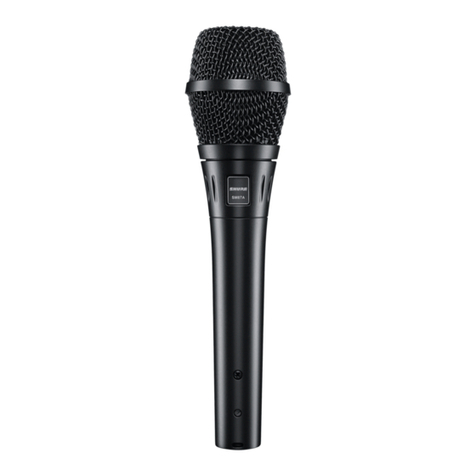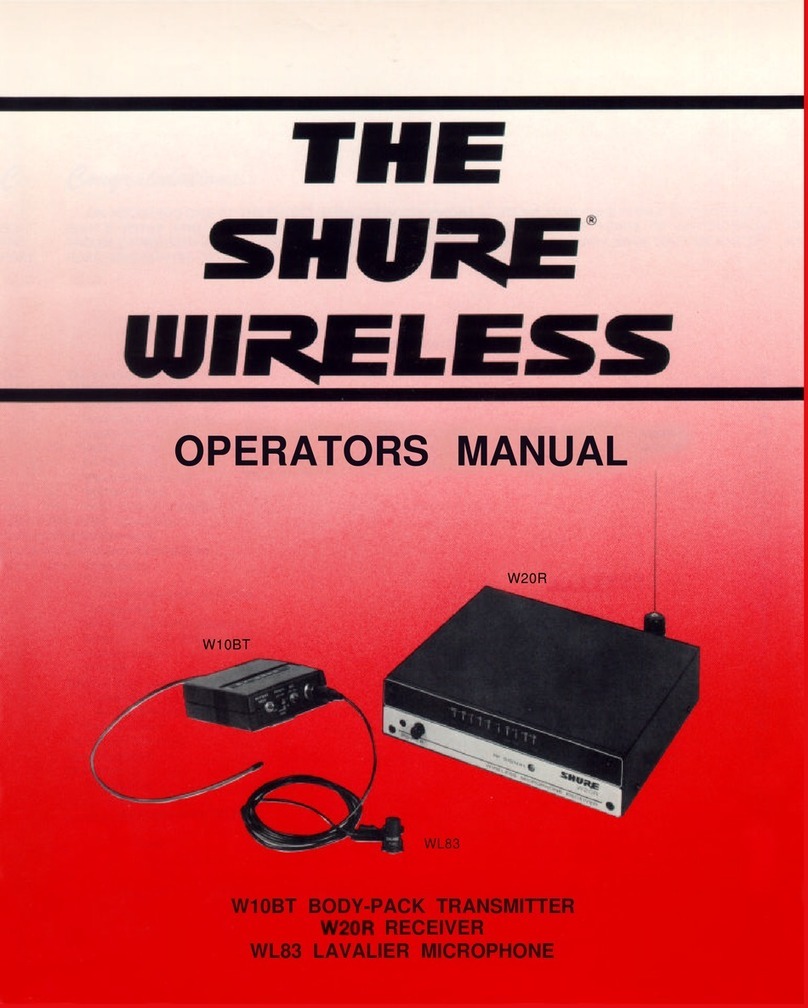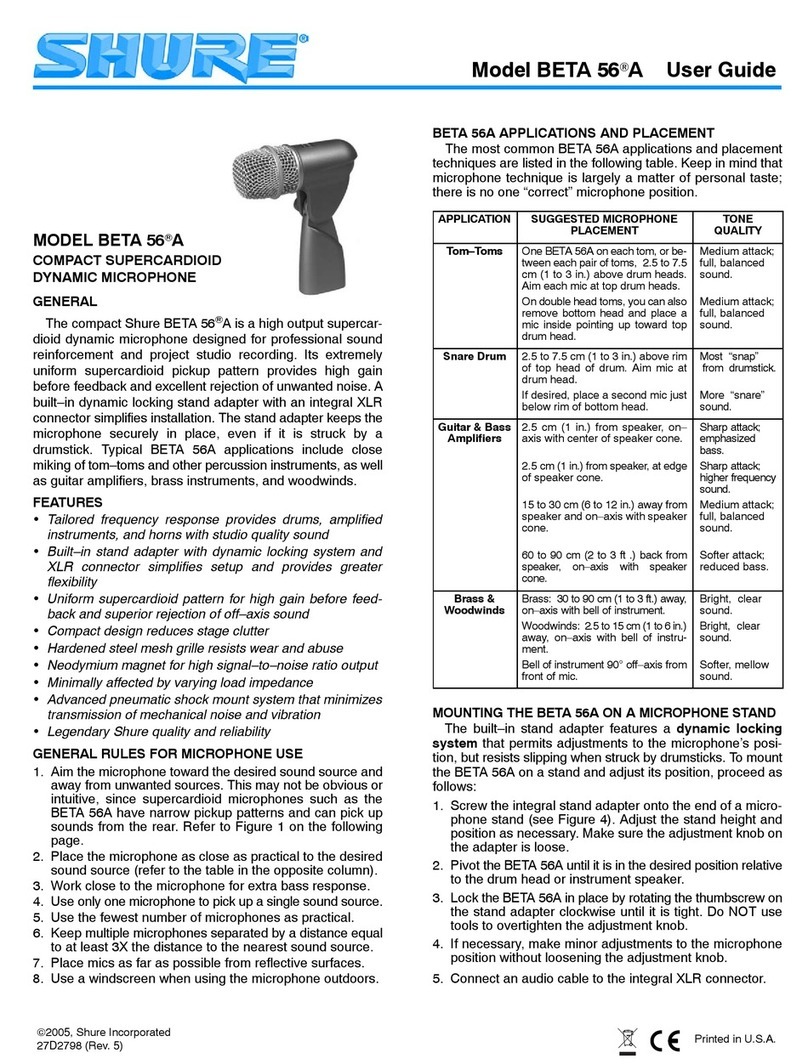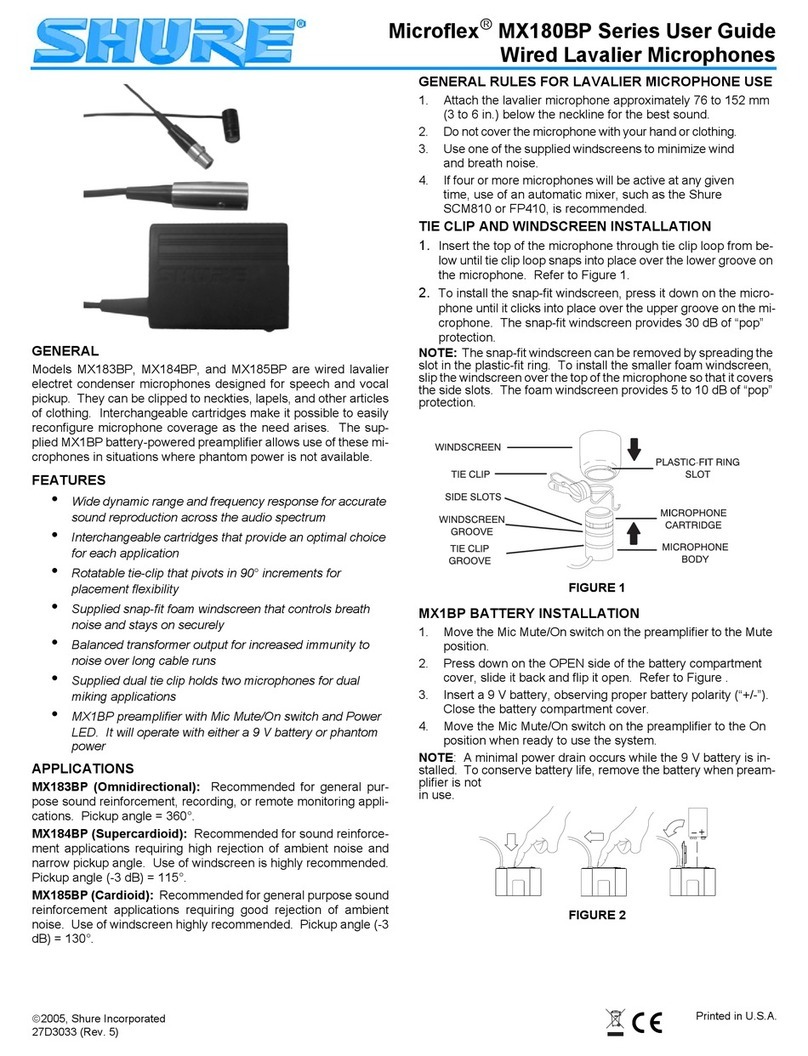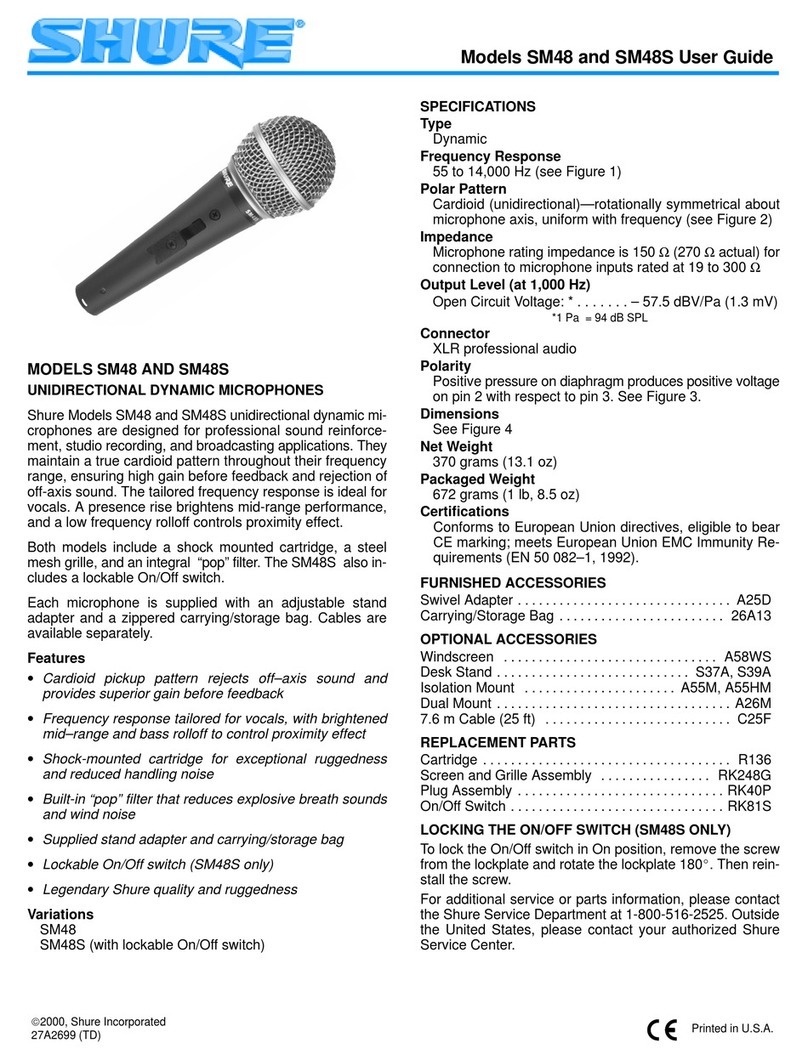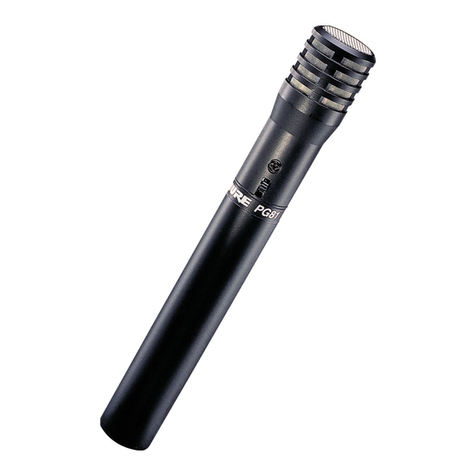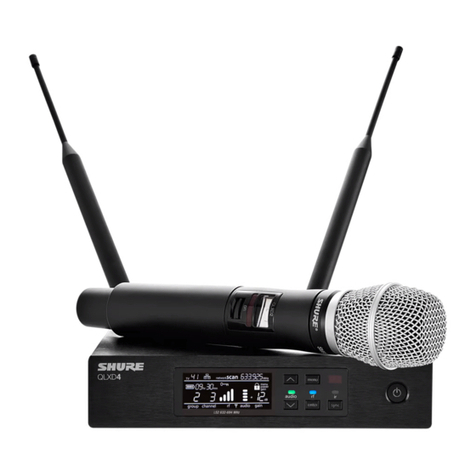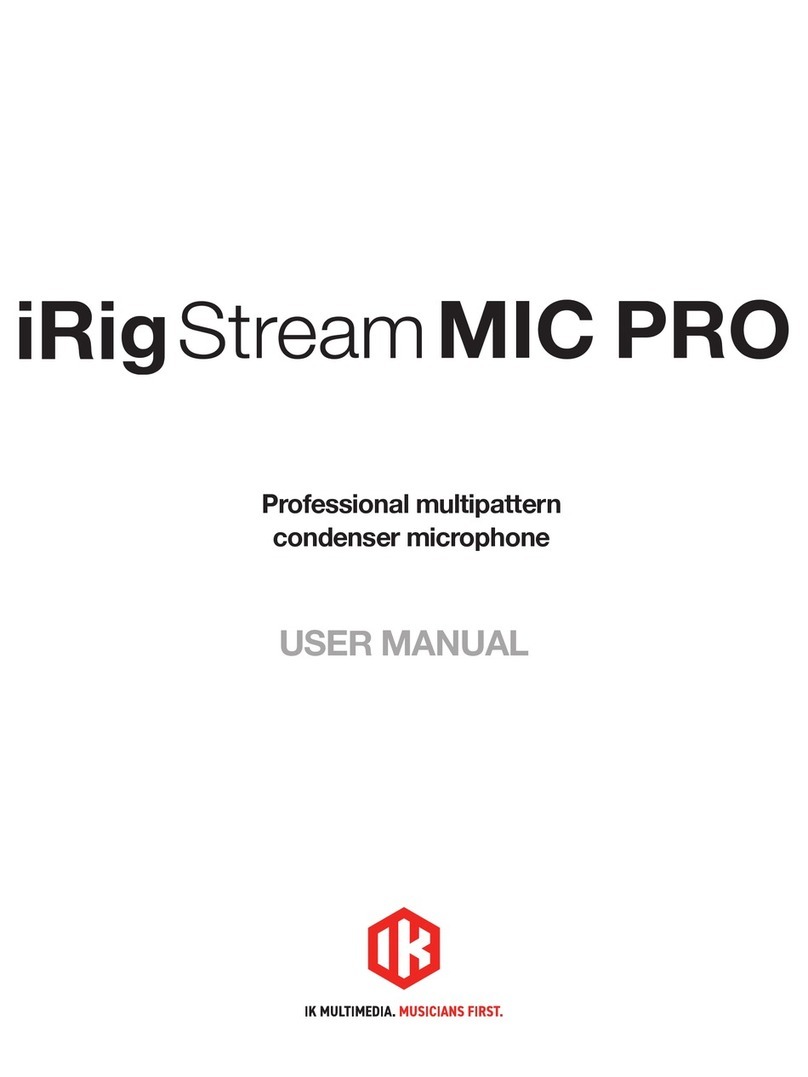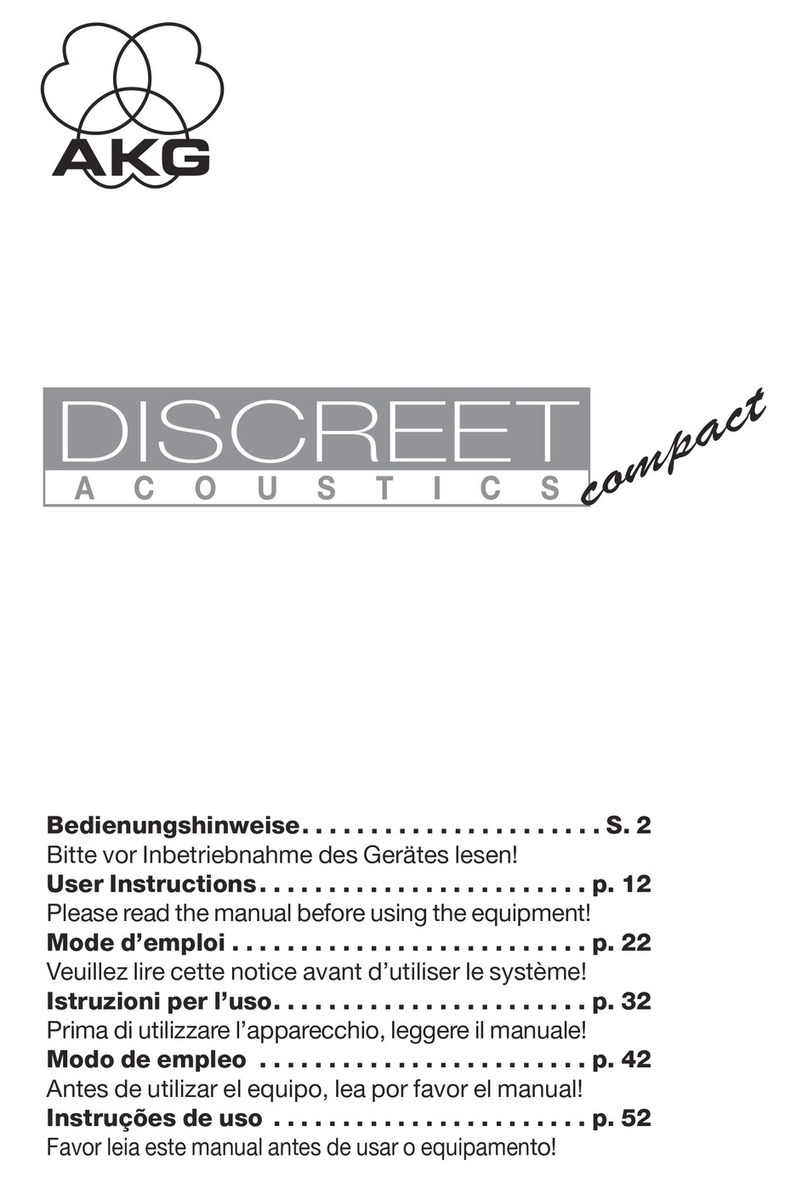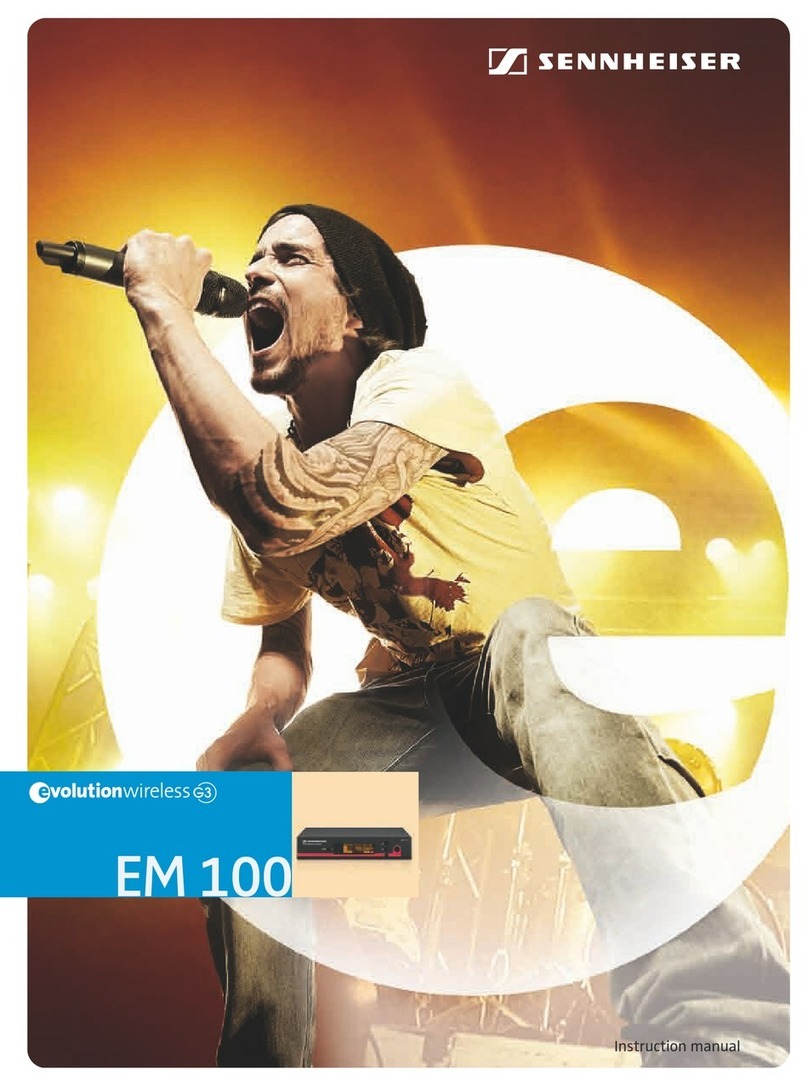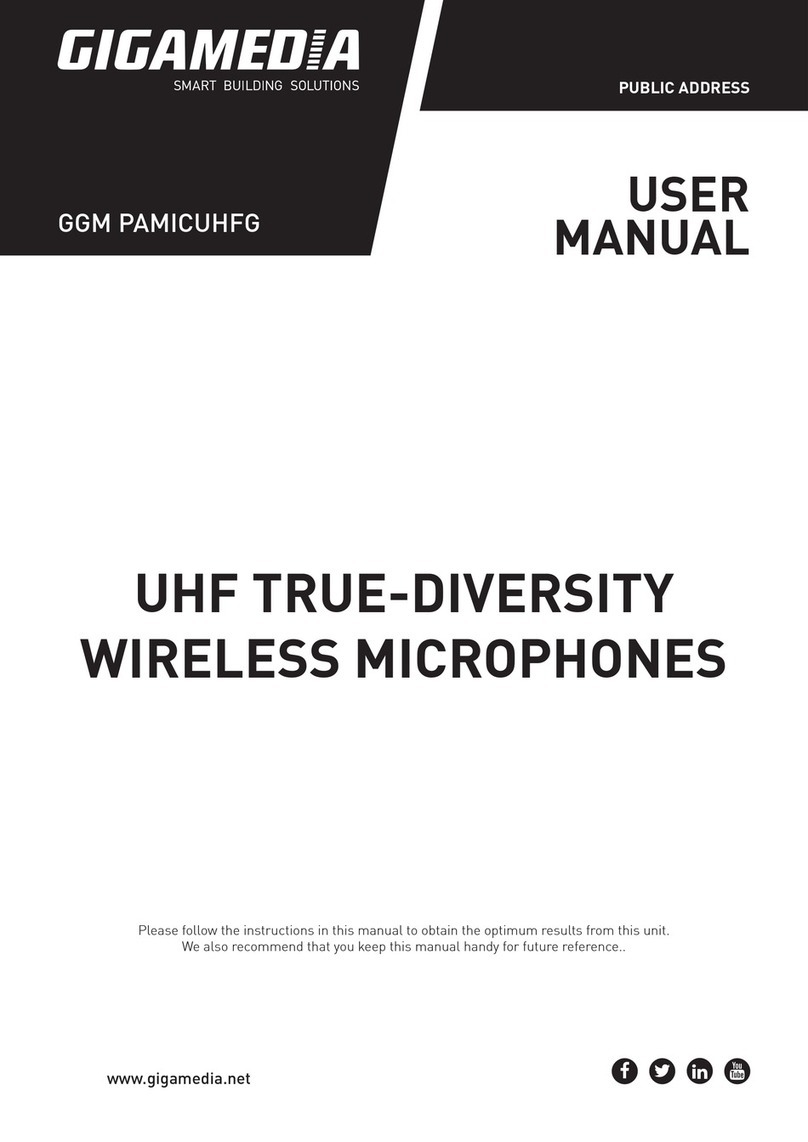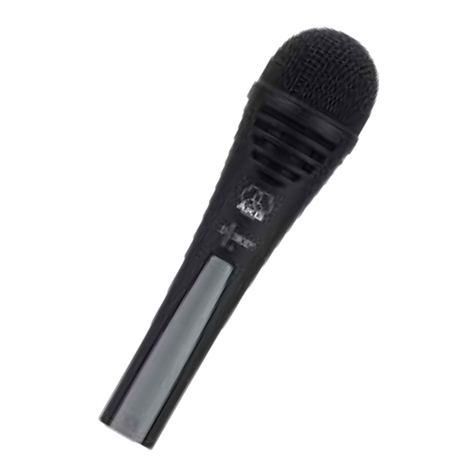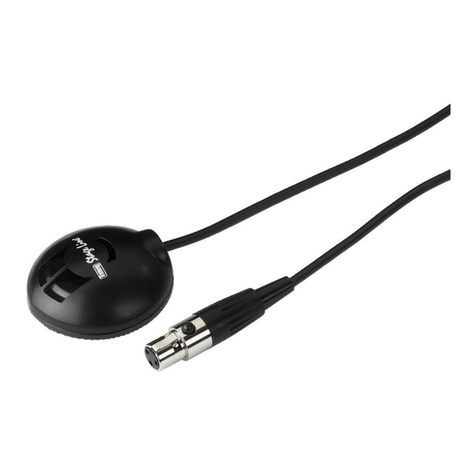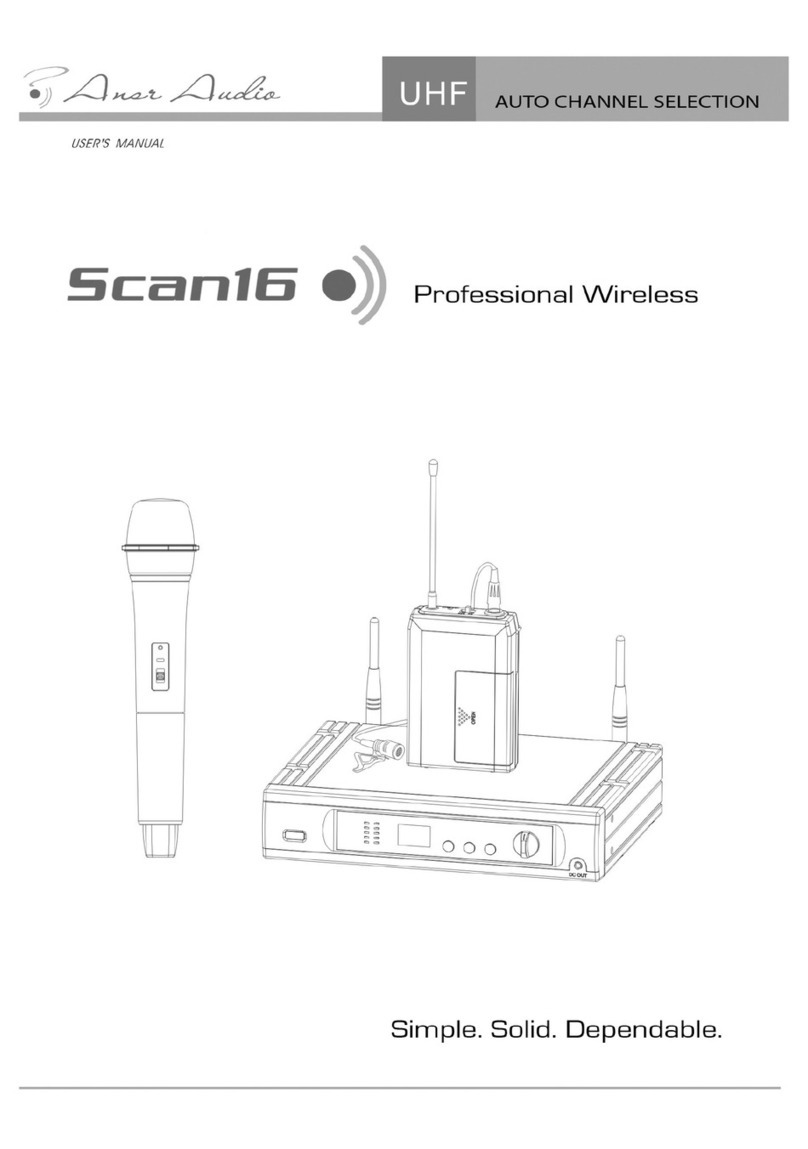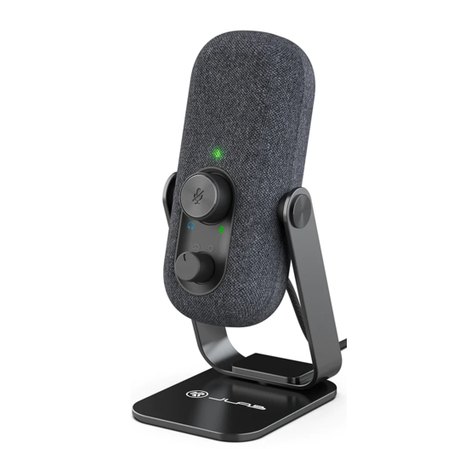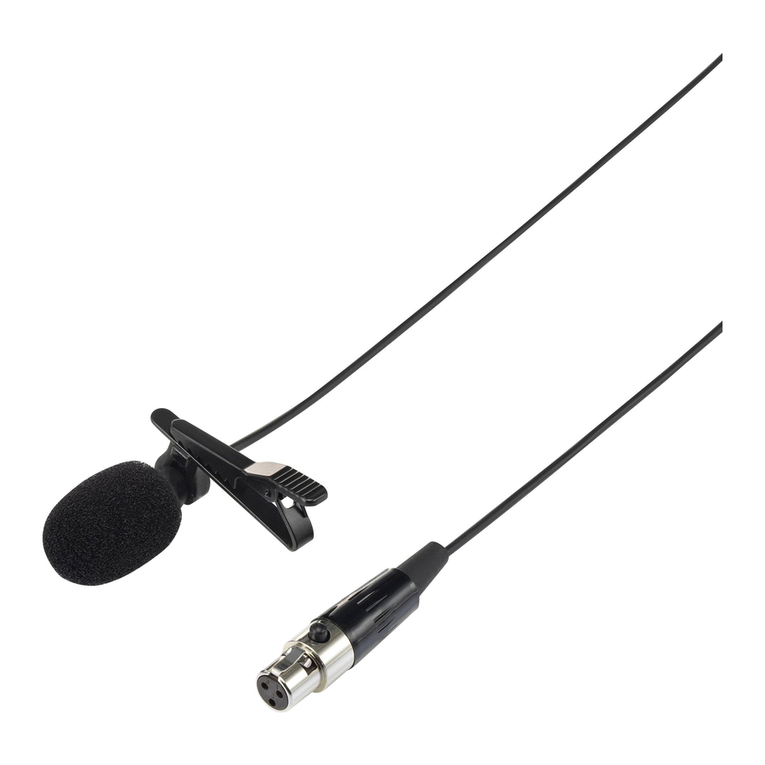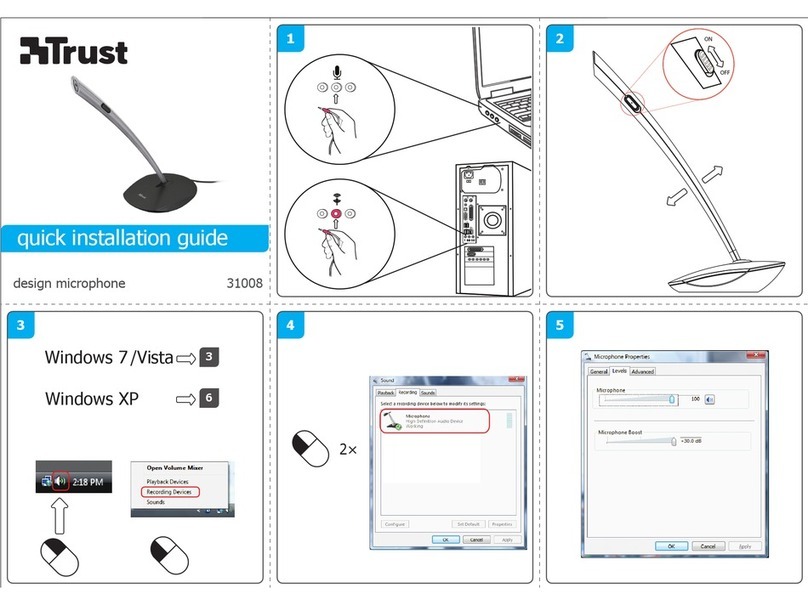
9
MODELLO SM58
MICROFONO DINAMICO UNIDIREZIONALE
Il modello SM58 della Shure è un microfono dinamico
unidirezionale (cardioide) per applicazioni vocali realizzato
perl’utilizzo instudi diregistrazione edimpianti diamplifica-
zioneprofessionali.Unfiltrosfericoincorporatomoltoeffica-
ce riduce al minimo il rumore del vento e l’effeto pop. Il dia-
gramma polare a cardioide isola la sorgente sonora
principale e simultaneamente riduce al minimo il rumore di
fondo indesiderato. Il microfono SM58 presenta una rispo-
stavocaleottimizzataperafornireunsuonolacuiqualitàco-
stituisceunostandardmondiale.Larobustezzadellafabbri-
cazione, il comprovato sistema di supporto antivibrazione e
lagriglia inacciaio inossidabilene garantiscono lacostanza
delle prestazioni, anche quando lo si maneggia senza deli-
catezza. Sia all’aperto che in interni, per canto od o parlato
—l’ SM58è, aschiacciante maggioranza,il microfonoscel-
to dai professionisti in tutto il mondo.
Caratteristiche
•
Rispostainfrequenzaottimizzataperapplicazionivoca-
li, con maggiore chiarezza alle frequenze intermedie e
attenuazione alle basse frequenze.
•
Diagramma polare a cardioide uniforme, che isola la
sorgente sonora principale e riduce al minimo il rumore
di fondo.
•
Sistema pneumatico di supporto antivibrazione che ri-
duce il rumore derivante dal maneggiamento.
•
Efficace filtro sferico incorporato, antipop e antivento.
•
Include un adattatore per supporto, resistente a rotture
accidentali, orientabile a 180
.
•
Le leggendarie qualità, robustezza e affidabilità Shure.
Variaziones
SM58
SM58S (con interruttore di alimentazione ON/OFF)
EFFETTO DI PROSSIMITÀ
Quando la sorgente sonora si trova a meno di 6 mm di
distanza dal microfono, la risposta alle basse frequenze au-
menta progressivamente (da 6 a 10 dB a 100 Hz), generan-
dounsuonodeitoni bassi più riccoecaldorispettoa distan-
ze maggiori della sorgente stessa dal microfono. Questo
fenomeno,noto come effettodiprossimità,si verificasolo in
microfonidinamiciunidirezionalicomeilmodelloSM58.L’at-
tenuazioneallebassefrequenzedell’SM58fornisceuncon-
trollo maggiore e consente a chi usa il microfono di sfruttare
pienamente l’effetto di prossimità.
APPLICAZIONI E COLLOCAZIONE
Ilmodello SM58, ideale per applicazionivocali adistan-
za ravvicinata, può essere tenuto in mano o montato su un
supporto. La tabella che segue ne riporta le più comuni ap-
plicazioni e tecniche di collocazione. Rammentare sempre
che le tecniche microfoniche dipendono largamente dalle
preferenze personali e che non esiste una unica posizione
”giusta” del microfono.
APPLICAZIO-
NE COLLOCAZIONE DEL MI-
CROFONO SUGGERITA QUALITÀ DEI
TONI
Cantanti e
coro Bocca a meno di 15 cm dal
microfono o a contatto con la
griglia, lungo l’asse del micro-
fono.
Suono robusto,
enfasi sui toni
bassi, massimo
isolamento da
altre sorgenti.
Parlato Distanza dalle bocca compre-
sa tra 15 e 50 cm, ad un’altez-
za appena superiore a quella
del naso.
Suono naturale,
toni bassi ridotti.
Distanza dalle bocca compre-
sa tra 20 e 50 cm, legger-
mente fuori asse sull’uno o
l’altro lato.
Suono naturale,
toni bassi ridotti e
suoni sibilanti ri-
dotti al minimo.
Distanza compresa tra 1 e 2
m. Suono lontano e
sfumato; rumore
ambientale.
COLLOCAZIONE DEGLI ALTOPARLANTI PER IL
PUBBLICO E DEL MONITOR DI PALCO
Collocare l’altoparlante di controllo del palcoscenico di-
rettamente dietro il microfono (vedi Figura 1). Collocare gli
altoparlantiperilpubblicoinmodochesianorivoltiindirezio-
ne opposta rispetto alla parte posteriore del microfono. Con
taledisposizionedeglialtoparlantisiriduceenormementela
possibilità di feedback. Prima della rappresentazione, con-
trollaresemprel’allestimentodelpalcoscenicoperverificare
la collocazione ottimale del microfono e degli altoparlanti di
controllo.
180°
90°
0°
90°
ALTOPARLANTI PER IL
PUBBLICO
MONITOR DI
CONTROLLO
MICROFONO SORGENT
SONORA
COLLOCAZIONE SUGGERITA DEGLI ALTOPARLANTI
FIGURA 1
REGOLE GENERALI PER L’USO DEL MICROFONO
1. Rivolgere il microfono verso la sorgente sonora deside-
rata e lontano da sorgenti indesiderate.
2. Collocare il microfono quanto più vicino possibile alla
sorgente sonora desiderata.
3. Perottenereuna maggiorerispostaai tonibassi,tenere
il microfono vicino a bocca.
4. Usaresoloun microfono perciascunasorgente sonora.
5. Mantenere la distanza tra più microfoni ad un valore
ugualeadalmenotrevolteladistanzatraciascunmicro-
fono e la sorgente sonora.
6. Usare il numero minimo di microfoni consentito dall’ap-
plicazione.
